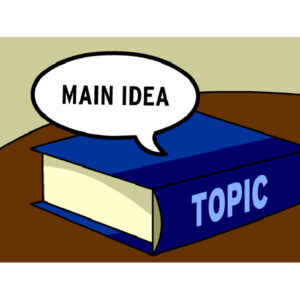 The main idea of a paragraph is the primary point or concept that the author wants to communicate to the readers about the topic. Hence, in a paragraph, when the main idea is stated directly, it is expressed in what is called the topic sentence. It gives the overarching idea of what the paragraph is about and is supported by the details in subsequent sentences in the paragraph. In a multi-paragraph article, the main idea is expressed in the thesis statement, which is then supported by individual smaller points.
The main idea of a paragraph is the primary point or concept that the author wants to communicate to the readers about the topic. Hence, in a paragraph, when the main idea is stated directly, it is expressed in what is called the topic sentence. It gives the overarching idea of what the paragraph is about and is supported by the details in subsequent sentences in the paragraph. In a multi-paragraph article, the main idea is expressed in the thesis statement, which is then supported by individual smaller points.
Think of the main idea as a brief but all-encompassing summary. It covers everything the paragraph talks about in a general way, but does not include the specifics. Those details will come in later sentences or paragraphs and add nuance and context; the main idea will need those details to support its argument.
For example, imagine a paper discussing the causes of World War I. One paragraph might be dedicated to the role that imperialism played in the conflict. The main idea of this paragraph might be something like: “Constant competition for massive empires led to increasing tensions in Europe that eventually erupted into World War I.” The rest of the paragraph might explore what those specific tensions were, who was involved, and why the countries were seeking empires, but the main idea just introduces the overarching argument of the section.
When an author does not state the main idea directly, it should still be implied, and is called an implied main idea. This requires that the reader look closely at the content—at specific words, sentences, images that are used and repeated—to deduce what the author is communicating.

 What is the main idea of a story examples?
What is the main idea of a story examples?